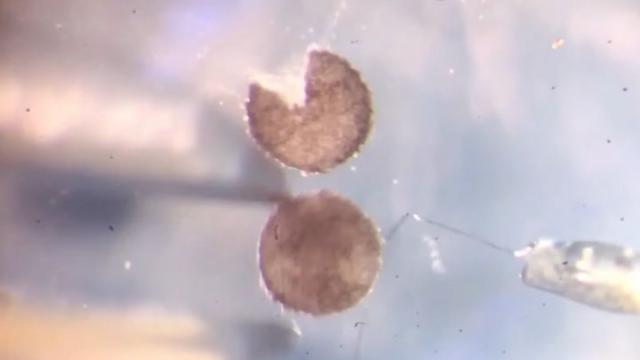Scientists in the U.S. have observed organic ‘Xenobots’ reproducing.
Studies on cells and artificial intelligence research have come together to produce a very interesting world first when combined — the ability of artificial intelligence to replicate generations of cells. That is, for the AI to reproduce organisms on its own.
“People have thought for quite a long time that we’ve worked out all the ways that life can reproduce or replicate. But this is something that’s never been observed before,” said Douglas Blackiston, a senior scientist at Tufts University.
Blackiston is the person who assembled the biological portion of the new study that details this phenomenon.
The study was published by the Proceedings of the National Academy of Sciences of the United States of America and supported by the Defense Advanced Research Projects Agency (DARPA).
It details that when a cluster of cells is removed from a developing organism, they then find and combine with loose cells, provided they move and look like they do. Apparently this doesn’t even need to occur through genetic manipulation.
So what does that mean? It means that cells can cluster with other clusters of cells and continue to function, even if the cells aren’t exactly identical, but still look and function similarly.
Now, the technical side of these Xenobots
Adding artificial intelligence into the mix, scientists found that AI can design clusters that replicate better and perform functions as they replicate. This is where we apply the ‘Xenobots’ name, as it implies the merging of organic life and robotics.
Where do these cells come from? Frogs! The original study on Xenobots back in 2020 found that cells from specific frogs could heal themselves and work in groups, so they were a natural fit for the study.
The new findings add a bit more depth to the Xenobots story.
Artificial intelligence, when given the ability to assemble organisms, would design ones with the capability of swimming around in the tiny dish and finding single cells, gathering them up and assembling more organisms. This self-replicating process would repeat over and over throughout the study, creating generations of Xenobots that reproduce.
It’s called Kinematic Replication, a form of replication previously observed at the molecular level, but never in whole cells or organisms.
“These are frog cells replicating in a way that is very different from how frogs do it. No animal or plant known to science replicates in this way,” says Sam Kriegman, the lead author of the new study and a post-doctoral research at Tuft University’s Allen Centre and Harvard University’s Wyss Institute for Biologically Inspired Engineering.
The implications of Xenobots not only existing but being able to reproduce in a way no other organic material does is fascinating, but also raises a bunch of ethical questions. Currently these cells and robots are biodegradable and regulated by ethics experts in the lab, so don’t think of it as too dystopian for now.
It’s still early days for the research, but we’ll keep an eye on these Xenobots and their ability to reproduce. It could end up being a breakthrough, much like how microbes were a breakthrough in cleaning up the BP oil spill.
